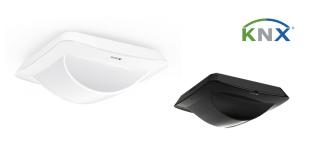Focusing on minimizing false readings and improving accuracy will quicken widespread adoption
Growing interest in energy conservation and reducing carbon dioxide emissions has encouraged research in energy-efficient buildings and stepped up the use of sensors in building applications. In fact, the construction of green buildings has become easier with the advent of smart sensors and actuators, as information on local environment and occupancy enables building automation systems to utilize energy in an efficient manner.
New analysis from Frost & Sullivan, Sensors for Energy Efficient Buildings and Building Management, finds that sensors are gradually becoming an integral part of buildings, allowing the demand-based control of systems such as lighting, heating, ventilation, and air conditioning. Equipping buildings with motion and air quality sensors too has become a popular trend in the construction sector in recent times.
“A key factor driving the growth of sensors is the integration of wireless communication techniques in sensors, thereby enabling systems to overcome the challenges posed by wired sensor networks,” said Technical Insights Research Analyst Sumit Kumar Pal. “Wireless sensors can be easily fitted into existing infrastructure.”
Moreover, incorporating energy harvesting techniques in sensors will ensure that zero power is drawn from the electricity grid while also reducing maintenance by eliminating the need for battery replacements. However, self-powered sensors need to be highly accurate with minimum errors in terms of false positives and false negatives. Sensor errors such as not being able to detect human presence or indicating the presence of an occupant even when no person is present can limit widespread implementation.
“Providing multi-sensing capabilities for various parameters such as temperature, humidity, carbon dioxide levels, and light intensity along with occupancy sensing will facilitate comprehensive monitoring of the environment and minimize sensor reading errors to a large extent,” added Pal. “The installation of devices using microelectromechanical systems and nanosensors can further help overcome these challenges and reduce overall costs.”
Sensors for Energy Efficient Buildings and Building Management, a part of the Technical Insights subscription, provides a nine dimensional analysis of the sensor market that includes market potential, global footprint, funding, intellectual property intensity, breadth of applications, Mega Trend impact, potential points of convergence and size of innovation ecosystem. Further, this research service includes detailed technology analysis and industry trends evaluated following extensive interviews with market participants.












